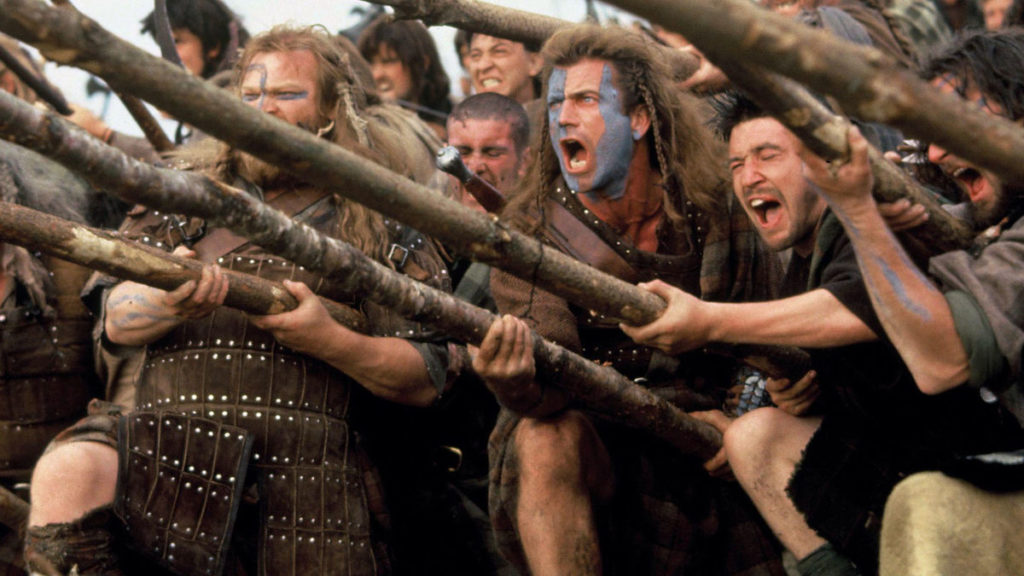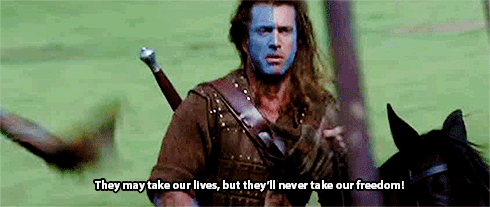Leadership Lessons from Braveheart
Written by Chris Schimkat
After a busy (but great) week, I opted for a quiet night-in to watch a movie last weekend. After the typical 2 hours spent to choose a movie on Netflix, we decided to watch Mel Gibson’s 2 ½ hour epic, Braveheart. It had been years since I had last watched it, and I was interested to see how my perception of the film had changed since I was a young(er) adult.
As the film went on, I felt myself marvelling at the masterful leadership displayed by William Wallace, starkly contrasted by the weak title-bearing “leaders” who opposed him. I couldn’t help but attempt to unravel the how and why of what made William Wallace such a compelling, skilled, and effective leader.
To be able to lure a horde of hard-headed strangers to what could fairly be perceived as inevitable death, to then turn things around into an against-all-odds victory is the epitome of leadership and what it can achieve. What Wallace’s leadership created was the very definition of an organisation: an organised group of people with a common purpose.
For this reason, I was certain that lessons from the film, regardless of historical accuracy, would be rich in inspiration ahead of my first formal week as a manager.
Here is my best shot at identifying the anatomy of what made William Wallace the inspirational figurehead of an ideology and movement that far-out-lived himself.
Starting with “Why”
Simon Sinek’s popular book and rhetoric “Start with Why” is exemplified by Wallace as he unites his followers (seemingly effortlessly) for a common purpose. The purpose isn’t wealth, fame, power, or selfishness – it’s about freedom for all of the people in Scotland.
This is a clear message that is well-communicated to his followers. Because he started with a “why” that was relatable to others, there was never a moment where any of his followers forgot the purpose that they were fighting for.
Leading from the front
My favourite mic-drop moment in the movie was this quote from Wallace, who said to Robert the Bruce,
“Men don’t follow titles. They follow courage!”
It reminded me that position, title or being at the top of a hierarchy, doesn’t make you a leader. It was courage, leading from the front, putting himself on the line, and leading by example that made a Scottish Highland peasant into the leader he needed to be to defeat his enemies.

Vision
Despite the ubiquitous presence of the aforementioned “why”, Wallace just needed a “how”. The best “why” in the world won’t work without an effective plan to execute. Wallace’s uncle told him that he first had to learn how to use this [gesturing towards his brain], before he could learn to use this [gesturing towards his sword]. It meant that it wasn’t enough to be strong or to work hard. The only way to reach his goals was to work harder AND smarter.
It can be said in the modern world that people are taught to “keep your nose to the grindstone” in order to be successful. But the message this film taught me is that to win against the odds (in our case, today’s increasingly saturated and competitive markets), you’ve got to get creative, strategic, and have foresight. The tactician wins the battle, but the strategist wins the war.
Communication Method Must Match Context
How do you think the “They can take our lives… but they’ll never take our FREEDOM!” speech would have gone if it was a company-wide email memo, slack message, or one-on-one meeting? It wasn’t just about what he said, but:
- How it was said
- Where it was said
- When it was said
Breaking the ice with a few jokes, delivering a perfect pep talk, and reinforcing the “why” right before a crucial battle when morale is low is exactly when and what Wallace’s followers needed to take them to victory. It may be old-fashioned, it may be harder, it may take more time, but the lesson for me was that considering the right medium for your message can mean the difference between inspiration and disenchantment.

Transparency
My favourite pro-transparency quote comes from the book Creativity, Inc., co-written by Pixar’s founder Ed Catmull:
“Careful ‘messaging’ to downplay a problem makes you appear to be lying, deluded, ignorant, or uncaring. Sharing problems is an act of inclusion that makes employees feel invested in the larger enterprise”
Throughout the film, Wallace made his followers aware of problems. One such problem was a lack of infantry to defeat the English in a battle. One of his loyal followers took it upon himself to go and convince the Irish to change sides. The outcome of the Irish switching sides meant the difference between slaughter and an evenly matched battle.
Ethics and Values
At multiple times throughout the film, the English King Edward “Longshanks” attempted to buy Wallace by offering land, gold, and power. However, Wallace put his ethics, values, and common man first. Without this, the war would have been lost, his legacy would have perished, and he would never have achieved his “why”.
The lesson I took away from this was a personal one. If Wallace had have taken the bribe and ended the war, he would have betrayed himself along with all of the family and friends who fell fighting for the same cause. He took the high road, which was the only road to a true victory and the ability to live (or die) knowing that he made the right choice.
These values are similar to Alpha Digital’s own founding principles – namely to act with integrity and practice transparency at all time. By implementing a focus on ethics this we have strived to build a culture that is 100% real, serving both our clients and team members.
Authenticity
This brings us to the next point on authenticity. If Wallace had any intention of doing any of what he did for power or money, his followers would have smelt it from a mile away. Inauthenticity is hard to hide, and by being true to himself and those around him, Wallace’s authenticity translated into the charisma, inspiration, and followers required to fight for his cause.
It Was Never About Himself
Although this entire post has been about Wallace and perhaps also much of the First War of Scottish Independence — Wallace never made it about himself. He was simply a vessel for the cause for which he so strongly believed in. This is a very endearing quality in a leader.
Having previously been a follower myself, I know all too well that people don’t follow you because they want to make your bank account grow, or because they can sleep better at night knowing that shareholders have seen above-market-rate growth this quarter. They do it for their own “why”. To be an effective leader, Wallace leveraged his alignment with the followers’ own purpose and values. On top of that, his followers had to know that he was the right person to take them towards their goals. From this, I learned the importance of showing that you have your followers’ best interests at heart by being authentic, selfless, transparent, ethical, and effective.

Summing it Up
While I did learn a lot from Braveheart about leadership, thankfully I don’t have to rely on movies to learn about what leadership is. I am surrounded by leaders who exemplify these traits every day in an authentic way.
For this reason, I am stepping into my new role as a manager with a quiet optimism that I will be able to earn my status as a leader (and not receive it by default), thanks to the exceptional people around me at all levels of the team. Here’s to a new adventure with the Alpha Digital family, I hope I can do my part to make us all proud of what we can accomplish together.

